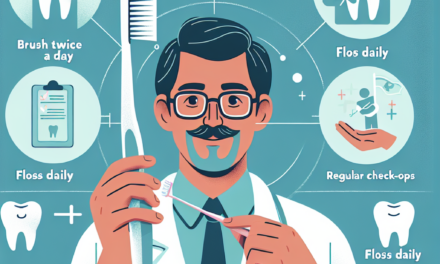Enhancing Care and Provider Performance: Insights from the Vendor Notebook
In the rapidly evolving landscape of healthcare, the need for enhanced care and provider performance has never been more critical. As healthcare systems strive to improve patient outcomes while managing costs, the role of technology and vendor partnerships becomes increasingly significant. This article delves into the insights gleaned from the Vendor Notebook, exploring how these partnerships can enhance care delivery and provider performance. We will cover five key subtopics: the role of technology in care enhancement, data analytics for performance improvement, the importance of training and support, patient engagement strategies, and case studies showcasing successful vendor partnerships.
The Role of Technology in Care Enhancement
Technology has transformed the healthcare landscape, providing tools that enhance care delivery and improve provider performance. From electronic health records (EHRs) to telemedicine, technology facilitates better communication, data management, and patient engagement.
One of the most significant advancements in healthcare technology is the implementation of EHRs. These systems allow for the seamless sharing of patient information among providers, which is crucial for coordinated care. According to a study by the Office of the National Coordinator for Health Information Technology, 86% of office-based physicians reported using EHRs in 2017, a significant increase from previous years. This widespread adoption has led to improved patient safety, reduced medication errors, and enhanced clinical decision-making.
Telemedicine is another technological innovation that has gained traction, especially during the COVID-19 pandemic. It allows providers to consult with patients remotely, increasing access to care and reducing the burden on healthcare facilities. A report from McKinsey & Company indicated that telehealth utilization has stabilized at levels 38 times higher than before the pandemic, highlighting its potential to enhance care delivery.
- Interoperability: The ability of different EHR systems to communicate with one another is crucial for enhancing care. Interoperability ensures that providers have access to comprehensive patient data, leading to better-informed clinical decisions.
- Remote Monitoring: Wearable devices and remote monitoring tools enable providers to track patient health metrics in real-time, allowing for timely interventions and personalized care plans.
- Artificial Intelligence: AI-driven tools can analyze vast amounts of data to identify trends, predict outcomes, and support clinical decision-making, ultimately enhancing provider performance.
In conclusion, technology plays a pivotal role in enhancing care delivery and provider performance. By leveraging EHRs, telemedicine, and other technological advancements, healthcare organizations can improve patient outcomes and streamline operations.
Data Analytics for Performance Improvement
Data analytics is a powerful tool that can drive performance improvement in healthcare. By analyzing patient data, providers can identify trends, measure outcomes, and make informed decisions that enhance care quality.
Healthcare organizations are increasingly utilizing data analytics to track key performance indicators (KPIs) such as patient satisfaction, readmission rates, and treatment outcomes. For instance, a study published in the Journal of Healthcare Management found that organizations using data analytics to monitor readmission rates were able to reduce them by 20% over two years. This reduction not only improves patient outcomes but also decreases costs associated with readmissions.
Predictive analytics is another area where data can significantly impact provider performance. By analyzing historical data, predictive models can forecast patient needs and potential health risks. For example, a healthcare system that implemented predictive analytics was able to identify patients at high risk for chronic diseases, allowing for early interventions that improved health outcomes and reduced costs.
- Real-time Dashboards: Implementing real-time dashboards allows providers to monitor performance metrics continuously, enabling quick adjustments to care strategies.
- Population Health Management: Data analytics can help identify health trends within specific populations, allowing for targeted interventions that address community health needs.
- Cost Analysis: Analyzing cost data helps organizations identify areas where they can reduce waste and improve efficiency, ultimately enhancing provider performance.
In summary, data analytics is essential for driving performance improvement in healthcare. By leveraging data to monitor KPIs, implement predictive analytics, and analyze costs, healthcare organizations can enhance care delivery and provider performance.
The Importance of Training and Support
Even the most advanced technology and data analytics tools cannot drive performance improvement without proper training and support for healthcare providers. Ensuring that staff are well-trained in using new systems and technologies is crucial for maximizing their potential.
Training programs should be comprehensive and tailored to the specific needs of the organization. For example, a large hospital system that implemented a new EHR system invested in extensive training for its staff, resulting in a smoother transition and higher user satisfaction. According to a survey conducted by the American Medical Association, 70% of physicians reported that inadequate training was a significant barrier to effective EHR use.
Ongoing support is equally important. Healthcare organizations should establish support teams that can assist providers with technical issues and provide guidance on best practices. A case study from a community health center demonstrated that having a dedicated support team reduced EHR-related frustrations among providers, leading to improved satisfaction and performance.
- Peer Mentorship: Pairing less experienced staff with seasoned providers can facilitate knowledge sharing and enhance overall performance.
- Feedback Mechanisms: Implementing feedback loops allows providers to voice concerns and suggest improvements, fostering a culture of continuous learning.
- Regular Refresher Courses: Offering ongoing training sessions ensures that staff stay updated on new features and best practices, maximizing the effectiveness of technology.
In conclusion, training and support are critical components of enhancing care and provider performance. By investing in comprehensive training programs and establishing ongoing support systems, healthcare organizations can empower their staff to leverage technology effectively.
Patient Engagement Strategies
Engaging patients in their care is essential for improving outcomes and enhancing provider performance. When patients are actively involved in their healthcare decisions, they are more likely to adhere to treatment plans and achieve better health outcomes.
One effective strategy for enhancing patient engagement is the use of patient portals. These online platforms allow patients to access their health information, communicate with providers, and manage appointments. A study published in the Journal of Medical Internet Research found that patients who used portals reported higher satisfaction levels and better adherence to treatment plans.
Another strategy is to implement shared decision-making (SDM) practices. SDM involves collaborating with patients to make informed decisions about their care based on their preferences and values. Research has shown that SDM can lead to improved patient satisfaction and better health outcomes. For instance, a randomized controlled trial found that patients who participated in SDM reported higher satisfaction and were more likely to follow through with recommended treatments.
- Educational Resources: Providing patients with educational materials about their conditions and treatment options empowers them to make informed decisions.
- Feedback Surveys: Regularly soliciting feedback from patients helps organizations identify areas for improvement and enhance the patient experience.
- Community Engagement: Involving patients in community health initiatives fosters a sense of ownership and encourages proactive health management.
In summary, effective patient engagement strategies are vital for enhancing care and provider performance. By leveraging patient portals, implementing shared decision-making practices, and providing educational resources, healthcare organizations can empower patients to take an active role in their care.
Case Studies Showcasing Successful Vendor Partnerships
Real-world examples of successful vendor partnerships can provide valuable insights into how these collaborations can enhance care and provider performance. Several healthcare organizations have leveraged vendor relationships to implement innovative solutions that improve patient outcomes and streamline operations.
One notable case study involves a large hospital system that partnered with a telehealth vendor to expand access to care. By implementing a telehealth platform, the hospital was able to provide remote consultations to patients in underserved areas. As a result, the hospital reported a 30% increase in patient visits and a significant reduction in no-show rates. This partnership not only improved access to care but also enhanced provider performance by allowing physicians to see more patients efficiently.
Another example is a community health center that collaborated with a data analytics vendor to improve population health management. By utilizing predictive analytics, the center was able to identify high-risk patients and implement targeted interventions. Over the course of a year, the center saw a 25% reduction in emergency room visits among these patients, demonstrating the effectiveness of data-driven decision-making.
- Collaborative Innovation: Successful vendor partnerships often involve collaborative innovation, where both parties work together to develop tailored solutions that address specific challenges.
- Shared Goals: Establishing shared goals and metrics for success ensures that both the healthcare organization and the vendor are aligned in their efforts to enhance care and performance.
- Continuous Improvement: Ongoing evaluation and feedback mechanisms allow organizations to assess the effectiveness of vendor solutions and make necessary adjustments.
In conclusion, case studies of successful vendor partnerships highlight the potential for collaboration to enhance care and provider performance. By leveraging telehealth solutions and data analytics, healthcare organizations can improve access to care, streamline operations, and achieve better patient outcomes.
Conclusion
Enhancing care and provider performance is a multifaceted challenge that requires a strategic approach. Insights from the Vendor Notebook reveal that technology, data analytics, training, patient engagement, and successful vendor partnerships are all critical components of this endeavor. By leveraging these insights, healthcare organizations can improve patient outcomes, streamline operations, and ultimately provide higher-quality care.
As the healthcare landscape continues to evolve, organizations must remain adaptable and open to innovative solutions. By fostering strong vendor partnerships and investing in the necessary tools and training, healthcare providers can enhance their performance and deliver exceptional care to their patients.





